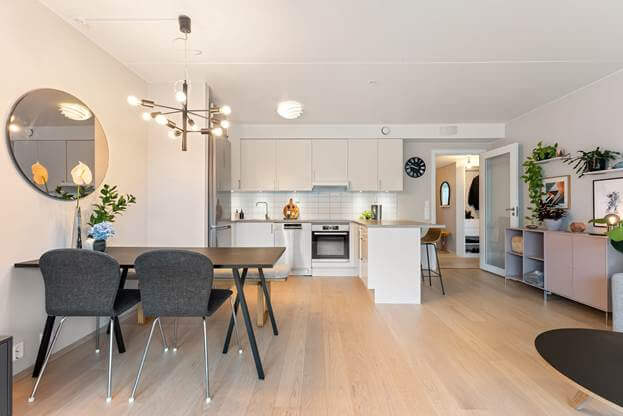When people think about table design, the focus often gravitates toward the tabletop—its color, shape, material, and finish. But beneath every stylish surface is a structural hero that rarely gets the attention it deserves: the metal table legs. While many view them as mere supports, their role is far more dynamic. From enhancing load-bearing capacity to influencing a room’s visual flow, metal legs are central to how a table performs and how it makes you feel in a space. They combine strength and aesthetics in ways that transform furniture from simply functional to truly foundational.
The Evolution of Table Leg Design
Over centuries, the design of table legs has evolved with architectural styles, technological advancements, and cultural preferences. Early wooden structures gave way to cast iron, wrought iron, and now modern steel and aluminum versions. Each material brought with it new strengths and possibilities. Metal table legs, in particular, emerged as a revolutionary upgrade—not just because they’re stronger, but because they allow for sleeker forms, greater design experimentation, and more sustainable outcomes. What used to be purely about balance and stability now incorporates motion, form, and artistic expression.
Strength Beyond Measure
Durability is one of the core reasons why metal legs are chosen for both residential and commercial applications. Steel, aluminum, and iron offer superior resistance to wear and tear, meaning they can hold up under significant weight and frequent use. Unlike wood, which can warp or crack over time, metal legs provide a rock-solid foundation for even the heaviest of tabletops. This makes them ideal for high-traffic environments like restaurants, co-working spaces, and industrial-style homes where utility meets aesthetics.
A Bold Style Statement
Beyond strength, metal legs bring visual contrast and style to a table’s design. Black powder-coated steel legs can add a modern, industrial edge to a rustic wooden top, while brushed aluminum can offer a minimalist, Scandinavian touch. From hairpin legs and geometric cross designs to sleek U-shapes and architectural A-frames, the visual possibilities are endless. When done right, the legs don’t just support the table—they become the centerpiece. In contemporary interiors, it’s not unusual to see the legs chosen first, with the top selected to complement them.
Space Optimization and Flow
The right set of legs can also define how well a table functions within its space. Think about how angled or tapered metal legs allow for more legroom and cleaner traffic flow in tight quarters. Or how pedestal-style metal bases provide more seating flexibility around dining tables. Unlike bulky wooden legs that often require sacrificing space, slim metal profiles make a room feel more open and breathable. This blend of form and function is why metal legs are frequently used in urban apartments and co-living environments where every inch counts.
Sustainability and Longevity
Metal’s recyclable nature makes it a top choice for eco-conscious designers and homeowners. Metal table legs are often crafted from recycled materials, and at the end of their life cycle, they can be recycled again, minimizing waste. Additionally, their long lifespan reduces the need for frequent replacements, cutting down on overall consumption. The sustainability factor isn’t just about the environment—it’s about creating long-lasting pieces that evolve with your space and style.
Versatility Across Design Styles
From mid-century modern to industrial chic, farmhouse rustic to ultra-minimalist, metal legs integrate seamlessly with nearly every design genre. That’s because they can be shaped, finished, and styled to match virtually any aesthetic. A reclaimed wood slab paired with sleek matte black legs instantly becomes a statement of modern rustic charm. On the other hand, a glass top supported by polished chrome legs can fit effortlessly into a luxury office or modern living room. This adaptability makes metal legs a favorite among furniture designers and DIY enthusiasts alike.
Customizability and Innovation
Today’s furniture market is increasingly leaning toward customization. Metal table legs offer a high degree of flexibility in this regard. Whether you need a specific height, a unique shape, or a particular finish, metal fabrication makes it possible. This is a game-changer for interior designers who are tailoring furniture to fit unique client visions. CNC machines, laser cutting, and powder coating technology have all made it easier than ever to bring custom metal leg designs to life without sacrificing strength or stability.
Ease of Maintenance
Another underrated benefit of metal legs is their ease of maintenance. Most finishes, whether they’re powder-coated, anodized, or galvanized, are resistant to moisture, rust, and corrosion. A simple wipe-down is usually enough to keep them looking brand new. For households with kids or pets—or in commercial spaces where spills are inevitable—metal table legs provide the peace of mind that maintenance won’t become a constant chore.
Function Meets Art
There’s an artistic side to metalworking that elevates the humble table leg into something extraordinary. Artists and fabricators are increasingly treating metal legs as sculptures—integral elements of the table’s identity. With the right design, they capture movement, contrast, and innovation. Whether it’s a twisted helix design or an angular, asymmetrical piece that creates a visual illusion, metal legs can turn an ordinary table into a functional work of art.
Metal table legs are not just structural necessities—they’re an essential component of a table’s identity. They hold the potential to redefine how a table looks, feels, and functions within a space. Their strength, versatility, and design-forward nature make them more than supports—they are expressions of durability, sustainability, and style. If you’re designing or shopping for a table, remember this: the beauty may be in the tabletop, but the soul is in the legs. And when it comes to finding the perfect balance between form and function, nothing performs quite like metal table legs.

Chase Ortiz is part of the team at PaigeSimple, where he takes care of all the advertising requests. With a sharp eye for detail, Chase makes sure every advertising opportunity is handled smoothly, helping the site grow and reach more people. His ability to manage these tasks efficiently makes him an important part of the team.

